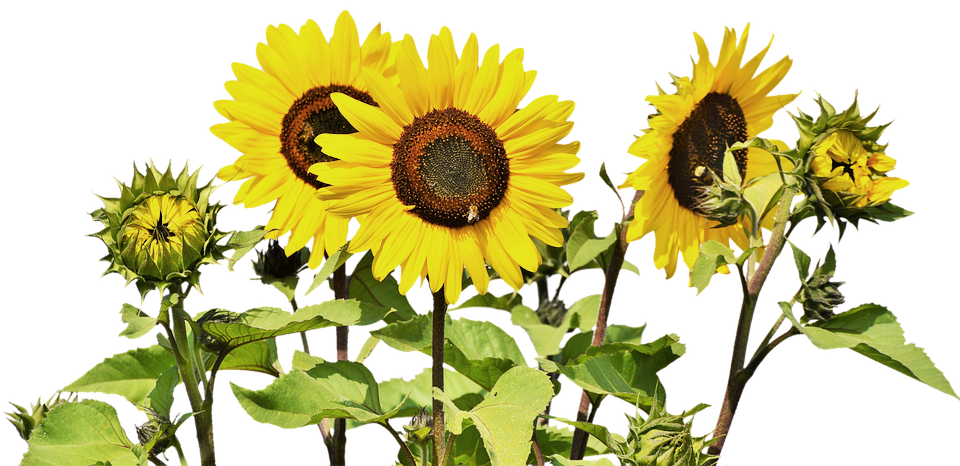
Your Ultimate Shrub & Tree Pruning Guide
By Chris Edmunds
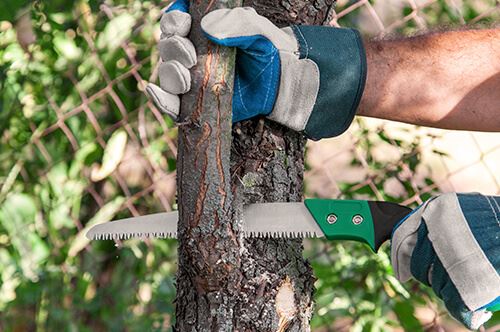
As gardeners, we talk about pruning all the time. Some people say it's easy, and others say it's an art best left to professionals. Some of us are too scared to hurt or kill our plants, shrubs, and trees, so we just don't do it at all. It begs the question: why is pruning important, anyway?
Reasons for Pruning
There are a few excellent reasons to do some pruning in your garden:
-
Get more blooms or fruit. Pruning back limbs that are not producing fruit or blossoms or that are injured helps to redirect more energy to parts of the plant that are producing. Pruning back diseased limbs can also help protect the rest of the plant from disease.
-
Encourage growth. It may seem counter-intuitive, but pruning can actually encourage denser and stronger branching.
-
Keep your yard safe. Branches at odd angles can cause tripping or head-bumping hazards.
-
Enjoy healthier plants. Open wounds from rubbing branches, diseased branches, or pest infestations put your shrub or tree at risk of dying completely. If you catch it early and trim back these branches, your tree will have a better chance of resisting disease and infection.
-
Help plants stay in shape. In the wild, trees and shrubs can develop some pretty funny looking shapes. We tend to prefer a more uniform, manicured look in our yards.
Knowing When to Prune
Many perennials can be pruned this time of year but for woody plants like trees and shrubs it is best to wait until the harsh temperatures of winter are over.
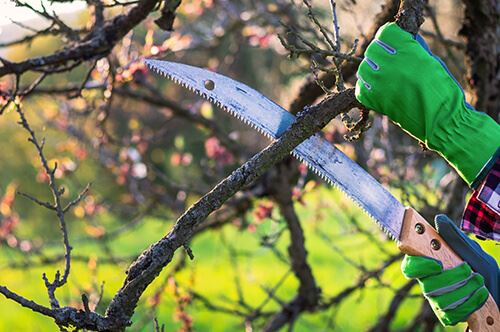 Tools for Pruning
Tools for Pruning
It's essential to use clean and sharp pruning tools to avoid introducing disease or causing rot.
There are specific pruning tools for different sizes of plants.
-
Small branches, up to 3/4 of an inch thick, can easily be pruned with a basic pair of gardening clippers. Bypass pruners are usually recommended over anvil types, which can crush the branch instead of slicing it.
-
Branches 3/4 of an inch to 2 1/2 inches thick should be pruned with loppers.
-
Any branches upwards of 2 1/2 inches in diameter should be done with a pruning saw.
For large branches 3-5 inches in diameter and up, call a professional arborist.
Pruning Perennials
Pruning perennials is crucial for keeping them as healthy as possible for many years. Leaving dead or dying foliage around or on the plant invites fungi and disease. If you have a diseased portion of a perennial, clipping that section back may be enough to stop the infection from spreading throughout the rest of the plant.
Some perennials should be pruned in the fall, and some should be pruned in the spring.
Prune these perennials in fall:
-
Bearded Iris
-
Bee Balm
-
Blanket Flower
-
Fennel
-
Catmint
-
Columbine
-
Daylilies
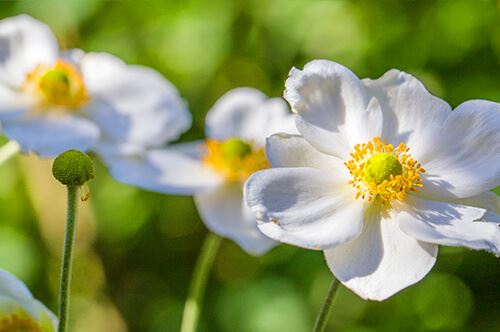
-
Anemone
-
Peony
-
Woody-stemmed Salvia
-
Veronica
-
Yarrow
These should all be cut back in the fall, leaving just a few inches above the soil.
Prune these perennials in spring:
-
Amsonia
-
Aster
-
Astilbe
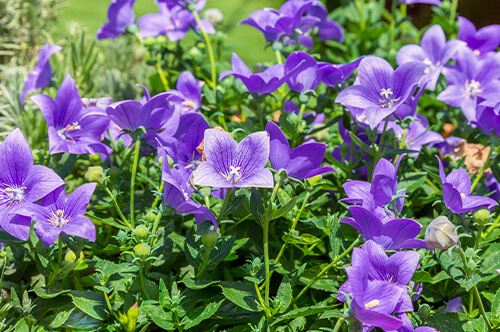
-
Balloon Flower
-
Black-Eyed Susans
-
Butterfly Bush
-
Coneflower
-
Coral Bells
-
Tick Seed
-
Daisy
-
Dianthus
-
Foxglove
-
Gaura
-
Liatris
-
Hosta
-
Lambs Ear
-
Lavender
-
Mugwort
-
Plumbago
-
Russian Sage
-
Soft-Stemmed Salvia
-
Sedum
These perennials don't require as much cutting back as the ones that need pruning in fall; a quick cleanup when you see new growth is all these plants need. Some of these are self-seeders, so they're best left to disperse their seed on their own, and some, like lavender, should not be pruned back until you can see where new growth is starting. Never prune back below areas of new growth. The exception is if you want to change the direction of growth.
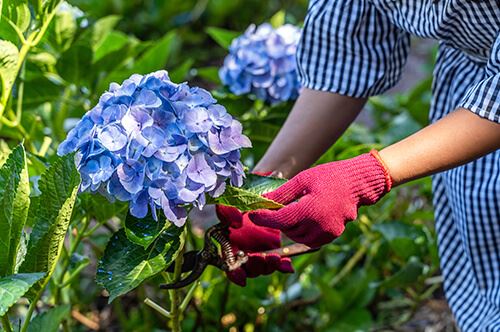 Pruning Hydrangeas
Pruning Hydrangeas
Hydrangeas don't need much pruning, but you can pick up those clippers occasionally to improve their shape or remove dead blossoms.
Hydrangeas that bloom in spring should be pruned in the fall. Give them a quick cleanup to remove dead wood or weak limbs.
Hydrangeas that bloom in the fall should be pruned in late winter or early spring before they wake up. You can prune these right back to the first leaf joint on each branch; this will encourage a larger and bushier plant each year.
Pruning Shrubs
Most shrubs don't need much pruning at all—just enough to maintain their shape.
Start from the bottom branches and prune towards the top. Make sure you step back every few cuts to check the shape. If you're pruning a hedge, you may want to use stakes and string to ensure straight lines.
Most shrubs are okay to shape any time of year, but ideally, you should prune them in late winter or early spring. Shrubs that flower in spring, like lilacs and forsythia, should be pruned right after they finish blooming. Shrubs that flower in summer should be pruned in late winter or early spring before leaves pop out. You can cut back suckers from your shrubs whenever you see them.
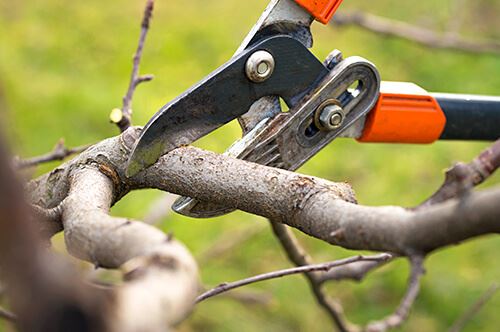 Pruning Trees
Pruning Trees
Tree pruning is also not that complicated, but there are a few key guidelines. Before you start, consider the size of your tree, the tools you have available, and your experience.
Safety is always the most important consideration. If you're not comfortable on a ladder, don't have a good tree pruning saw, have never pruned a tree before, or don't have someone to help you, you should probably call a professional.
Generally, trees should be pruned when they are dormant, towards the end of winter or in very early spring before the leaves start to bud.
There are a few exceptions to this rule—oak trees should be pruned in the late fall or early winter when oak beetles are less active.
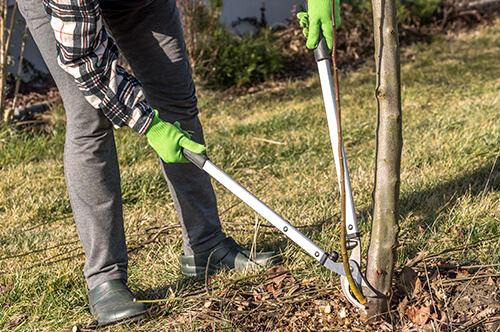 Tree Pruning Tips
Tree Pruning Tips
When pruning trees, the first thing to keep in mind is the 3 "D"s: damaged, diseased, and dead. Prune off anything that fits into the 3 "D"s; those branches are not doing your tree any favors.
Next, thin the canopy. Ideally, songbirds should be able to fly through the tree. Trim out anything that's growing at an odd angle or rubbing against another branch. For ideal production, a fruit tree should have enough space between branches to allow a pigeon to fly through.
Trim back suckers coming out of the trunk below the main branches, and coming off the main branches.
Check the shape. Once you've completed the tasks above, take a few steps back and have a good look. Walk around your tree and view it from different angles before starting to shape it. Don't overdo it here; it's easy to get carried away! Just take off enough to create an attractive shape.
The Bottom Line: It's Okay to Prune When You Need To
While certain times of year are better than others for pruning, you can always prune when you need to. As long as you don't cut off too much, your plant will recover. If you prune some hydrangeas at the wrong time, you might get a year without flowers, but the plant will survive. Most plants, shrubs, and trees are more resilient than we give them credit for and can withstand some degree of pruning at any time of year.

